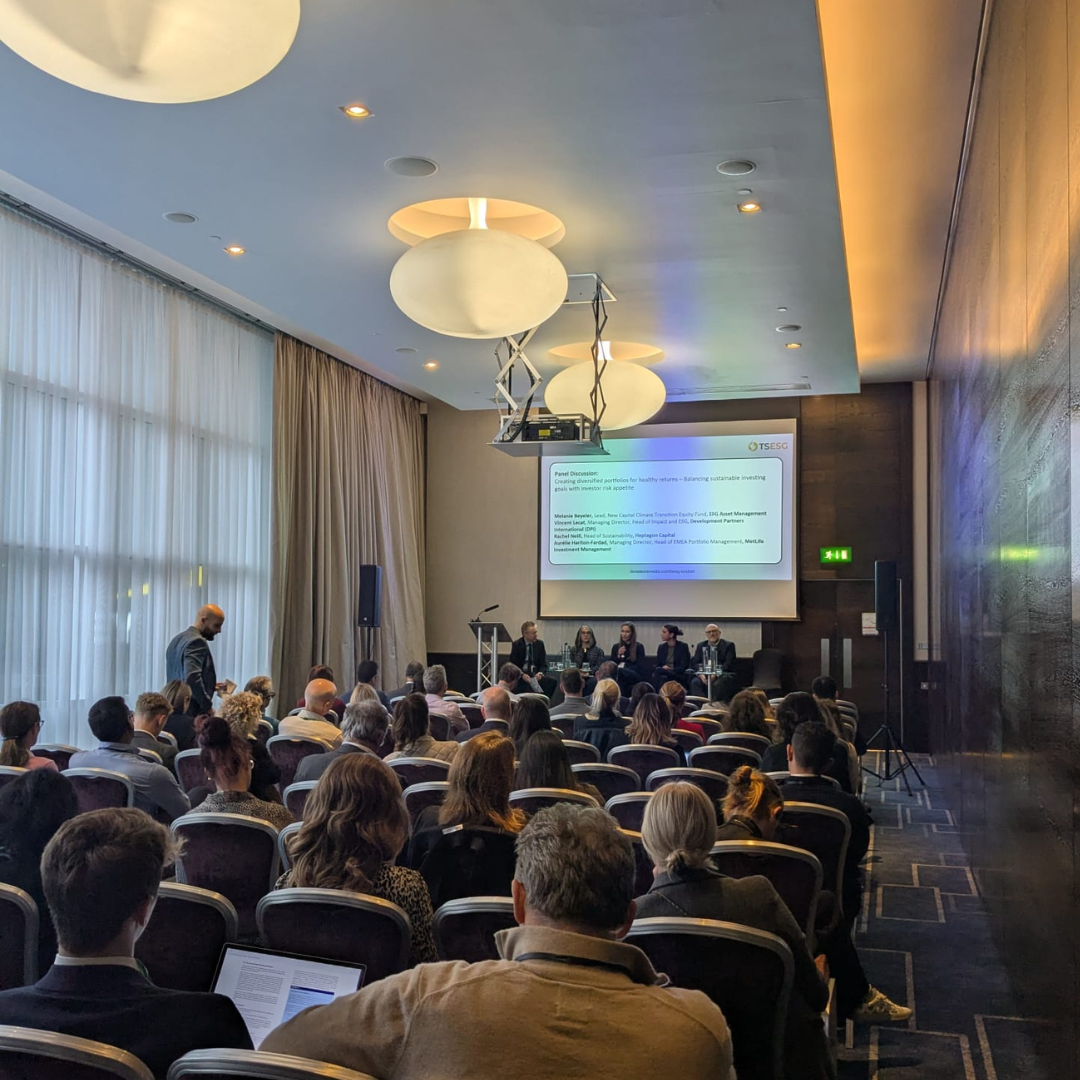
View From The Top: Data dependent dissonance
View from the very top: the risk-on rally can continue, but do not expect the path forward to be linear. When Central Banks cut rates in the absence of a recession, this is generally positive for risk assets. However, investors will have to navigate through the conflicting signals being sent from both the real economy and the Federal Reserve. Our counsel is to focus on the bigger picture, diversify and be opportunistic. The economy remains remarkably resilient, and a severe recession does not look likely to us. At the same time, the direction of travel is towards easier monetary policy, especially as we move into 2026. Ongoing investment in AI infrastructure provides further ballast, for it is being rewarded by investors and supported by policy. Against such a backdrop, it is important to guard against complacency and to recognise that abrupt pullbacks can occur. When these do, this may represent the time to lean further into risk.
Asset Allocation:
Equities: FOMO (fear of missing out) has continued to sustain the 30%+ gain in global equity markets enjoyed since their April trough. The melt-up has lifted most segments and the rally may endure through to year-end, particularly on optimism over possible rate cuts and earnings upgrades. Corporates certainly need to deliver on growth given elevated valuations. Both the S&P 500 Index and the MSCI ACWI Index are trading at or above their 90th percentile on forward P/E relative to the last 25 years, according to Goldman Sachs. Against this background, we favour diversification, particularly into undervalued segments of the market. Truly active stock-pickers look well-placed to benefit.
Fixed income/ Credit: Returns from investing in a 60:40 portfolio, compared to a pure equity portfolio (using 10-year US Treasuries and the S&P 500 Index as proxies) have been consistently negative since the Great Financial Crisis, according to Bloomberg. This questions the logic of fixed income as a diversifier within portfolios. The case for investing now would be to lock in yields in the hope that interest rates will fall over time. Tight credit spreads in Investment Grade and High Yield also limit opportunities within this asset class at present.
Currencies: The case for a weaker Dollar is now well understood. More interesting is how much may already be discounted and how significant is the scope for mean reversion from current levels. Consider that the Dollar Index saw its biggest loss in over 50 years in the first half of 2025. Capital inflows and the prospect of potential easier monetary policy may now drive relative Dollar strength.
Gold: The rise in the gold price has been relentless in 2025, but it has good justification. The precious metal represents a valid alternative for investors who have lost faith in, or want to diversify away from, the United States. Threats to Central Bank independence provide another reason for owning gold, as do geopolitical uncertainties. Gold remains a core holding for us.
Alternative Assets: Allocations to this asset class can increasingly serve as a form of replacement for fixed income, offering both portfolio diversification and income-generating characteristics. Hard assets can act as a hedge against inflation and fiscal debasement. We favour selective investments, particularly in uncorrelated strategies.
Cognitive dissonance, for those unfamiliar, refers to a state of discomfort experienced when holding two or more conflicting beliefs. Given how extraordinary 2025 has been to-date, with several mini cycles (the DeepSeek moment, tariffs and Liberation Day, the subsequent risk-on rally), the feeling should be familiar to many investors.
Look around and countless examples of cognitive dissonance abound. Both equities and gold continue to reach new highs. A record percentage of investors (58%) believe the stock market to be overvalued, per Bank of America’s latest survey. Consider next the Fed. Investor expectations and the FOMC’s dot-plot show notable misalignment about the direction of interest rates. Fragile cohesion perhaps best describes sentiment among the voting members of the Fed’s Monetary Committee. Then there’s the economy. For sure, it’s performing better than anyone expected, but there are worries (especially over tariffs) around the corner and consumer sentiment is at its lowest in almost six months.
How best to chart a way through this maze of conflicts? Our counsel for some time has advocated for diversification. Be pragmatic and opportunistic. Pull-backs in equity markets are normal, especially those that may currently be priced for perfection. Risk assets could easily become more volatile, especially given the almost one-way rally that has endured since April. Next, as Jerome Powell reminds us regularly, follow the data. Finally, show humility. Neither the investment community nor the Federal Reserve has any unique insight into how the economy will evolve over the next six months, despite the variance in interest rate expectations. Remember, that while the Fed’s focus is on its dual labour market/ inflation mandate, (equity) investors care more about the scope for earnings upgrades.
Arguably the most important dynamic is that if there is further policy easing without a recession, then the current risk-on rally can continue. Equity returns tend to be strong in rate cutting cycles. To the extent that history represents a precedent, consider the performance of markets in 1984, 1987 or 1995 when this favourable combination occurred. A severe recession looks unlikely to us. To the extent that there may be further negative gradual tariff creep, this could be offset by the momentum behind the ongoing AI investment and deployment cycle. Regardless of readers’ personal opinions on President Trump, it is important to recognise that he is getting things done. There may be potential upside should further deregulatory policy actions or some form of geopolitical détente occur.
From the perspective of the Fed, the debate is less about easing and more about how much is required. An implied further 50 basis points of reduction in the Fed Funds Rate before the year-end represents the median assumption made by members of the FOMC in their ‘dot plot’ projections. However, there are notable outliers in both directions (remaining tight, further loosening). The variance may simply be indicative of the conflicting signals within the economy – or another sign of cognitive dissonance.
For Fed Chair Powell, it is only logical to refuse to guarantee more cuts. It cannot be pleasant being caught between political pressures and data dependency. However, it is fair to recognise that large and rapid cuts would only be needed if the economy were on the verge of recession. Both Powell and investors might also want to be conscious of elevated asset prices. Further rate cuts at this stage might only inflate the current bubble further.
History would suggest that the Fed has tended to be more reactive than proactive in its policy stance. At present, it arguably makes more sense to tolerate somewhat elevated inflation over potential further labour market weakness. The dilemma remains, however. Ease too little, and there is a risk of falling behind. Or ease too much and face over-stimulation. Much of this debate may, of course, soon be moot. May 2026 marks the installation of a new Fed Chair. On most accounts, the next person responsible for managing US interest rate policy will be a likely dove, implying a direction of travel towards lower rates.
Recession risk was a concern held by many barely a month ago, yet data released during September speaks to a resilient economy. US GDP growth for the second quarter of 2025 was revised up to an annualised rate of 3.8% (from 3.3% previously and a first estimate of 3.1%). The Atlanta Fed’s GDPNow tracker points to a 3.9% rate for the third quarter. The OECD upgraded both its US and global GDP forecasts in late September and now projects a 3.3% pace of expansion for the global economy in 2025, a clear improvement on its June forecast of 2.9%.
At the same time, growth is forecast to slow in 2026. Few good things continue forever. The OECD reasonably asserts that tariffs and broader deglobalisation will diminish the pace of growth relative to prior cycles. The problem for many, however – and another sign of cognitive dissonance – is just where we are in the cycle. Post-pandemic normalisation has taken longer than anyone assumed, exacerbated by supply-chain challenges. Inflation and labour market data continue to show conflicting signals.
Inflation expectations are misaligned with current reported figures (4.0% in a year’s time, according to the University of Michigan, versus a 2.9% September CPI print). At the same time, a path towards lower interest rates may help to reduce inflation – if reduced financing costs result in increased supply, thereby alleviating prior inflationary constraints. Inflation break-evens (or the difference between nominal and inflation-linked bond yields) remain anchored for now at below 2.5% on a five-year basis.
53 consecutive months of US job creation ended in May 2025. In the last three months, an average of 29,000 new jobs were created. Six months prior, this figure was 111,000. However, the forces responsible for this change are unclear. Shrinking supply (from deportations) may be as much a factor as declining demand. Unemployment exceeds job openings for the first time in four years, but the unemployment ratio (4.3%) is still low by historic standards.
Might AI provide part of the answer to this conflict? Rather than ask ChatGPT, consider that part of the impressive run being enjoyed by both financial markets and the real economy is being driven by AI. First, the facts: AI-related stocks have accounted for 75% of S&P 500 Index returns, 80% of its earnings growth and 90% of its capital spending growth since ChatGPT launched in November 2022 (per JP Morgan).
Practically, big tech companies are laying off workers and emphasising operational discipline. This is helping to drive improved margins. The trend may extend beyond the Mag-7. Imitation can be a sincere form of flattery. At the same time, the infrastructure investment super-cycle continues, for it is being rewarded by investors and supported by policy. The AI arms race between the US and China is real. No surprise perhaps that 38% of American CEOs plan to cut employment over the next six months but 89% see capital expenditure increases over the same period (according to Business Roundtable). Put another way, it takes a lot to build a data centre, but very few people to operate it.
It may then require quite something to properly crack the market. The ongoing rise of technology remains an enduring theme, at least for as long as the benefits of AI are not revealed as being as flimsy as the emperor’s new clothes. Over time, it will become increasingly necessary for businesses to generate returns from AI, even if this may be tomorrow’s problem. The same could be said for rising government debt-to-GDP ratios. This metaphorical can continues to be kicked down the road. Neither tariffs nor geopolitics has gone away. Enjoy the ride but recognise that there will inevitably be bumps along the way.
Alex Gunz, October 2025
Disclaimers
The document is provided for information purposes only and does not constitute investment advice or any recommendation to buy, or sell or otherwise transact in any investments. The document is not intended to be construed as investment research. The contents of this document are based upon sources of information which Heptagon Capital LLP believes to be reliable. However, except to the extent required by applicable law or regulations, no guarantee, warranty or representation (express or implied) is given as to the accuracy or completeness of this document or its contents and, Heptagon Capital LLP, its affiliate companies and its members, officers, employees, agents and advisors do not accept any liability or responsibility in respect of the information or any views expressed herein. Opinions expressed whether in general or in both on the performance of individual investments and in a wider economic context represent the views of the contributor at the time of preparation. Where this document provides forward-looking statements which are based on relevant reports, current opinions, expectations and projections, actual results could differ materially from those anticipated in such statements. All opinions and estimates included in the document are subject to change without notice and Heptagon Capital LLP is under no obligation to update or revise information contained in the document. Furthermore, Heptagon Capital LLP disclaims any liability for any loss, damage, costs or expenses (including direct, indirect, special and consequential) howsoever arising which any person may suffer or incur as a result of viewing or utilising any information included in this document.
The document is protected by copyright. The use of any trademarks and logos displayed in the document without Heptagon Capital LLP’s prior written consent is strictly prohibited. Information in the document must not be published or redistributed without Heptagon Capital LLP’s prior written consent.
Heptagon Capital LLP, 63 Brook
Street, Mayfair, London W1K 4HS
tel +44 20 7070
1800
email london@heptagon-capital.com
Partnership No: OC307355 Registered in England and Wales Authorised & Regulated by the Financial Conduct Authority
Heptagon Capital Limited is licenced to conduct investment services by the Malta Financial Services Authority.

Receive the updates
Sign up to our monthly email newsletter for the latest fund updates, webcasts and insights.


